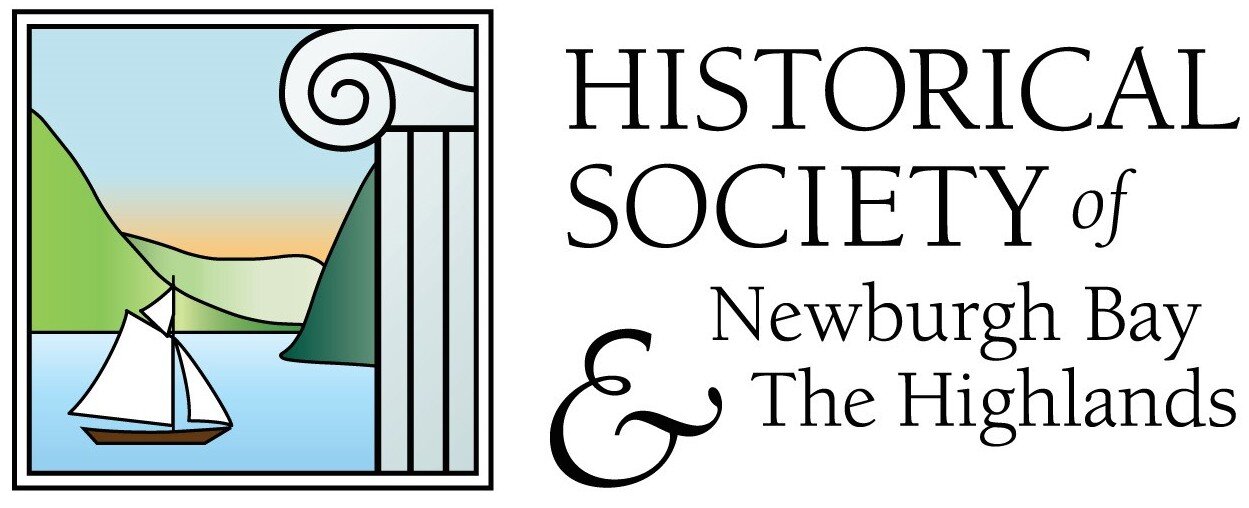The Downing Park Hospital
A concrete pergola was built on the Smith farmhouse foundation
Spring is the time of year we all go outside to enjoy the ideal weather and the beauty of nature in full bloom. Over a century ago in1908, Newburghers were doing the same but their favorite destination for outdoor beauty, Downing Park, was off-limits to them from Dubois Street to Carpenter Avenue. Since those acres were, even in its first decade, the section of the park where flower beds were planted and where the view over Newburgh to the Hudson River was most spectacular, it upset people to be barred from entering. That eastern half of the park had been quarantined for four months and guards had kept people from strolling along the paths to the top of the hill. Smallpox had broken out among the population in February 1908 and the Board of Health had seized the mansion then standing in the park to be used as a “contagion hospital.” It was quickly selected because “there are no other residences near and no necessity exists of persons approaching it.”
From February through June, people of all ages afflicted with smallpox were brought to the house in the park where a nurse, a matron, and a visiting doctor watched over them and helped them through the debilitating symptoms of smallpox or “eruptive fever” as they were also calling it then. Panic over its potential to spread caused the doctors who comprised the city’s Health Board to order that a remote location be outfitted as a temporary hospital during the epidemic. The city council went along with them in seizing the old Cole Smith mansion in Downing Park partly because it sat apart from other dwellings and could be quarantined and partly because it was already owned by the city. The Smith farm had been purchased just over a decade before to build the eastern half of the city’s public park designed by Frederick Olmstead and Calvert Vaux in honor of their mentor Newburgh’s Andrew Jackson Downing, the nation’s first landscape architect. The Smith mansion was left in the plan as a feature of the park and as a residence for the park’s maintenance staff. Early views of Downing Park have labeled the house as “The Rest.” Visitors were perhaps allowed to stop there and sit under the shade of its trees or even on its porch.
But on Valentine’s Day of 1908, the Cosmans and the Sheehans who rented quarters in “The Rest” were quickly evicted to rooming houses, their household goods were moved to a storage building on Broadway and Washington Place, and city workers began outfitting the 14-room mansion as a hospital with a ward for males and one for females on either side of the upstairs hall. The main floor was for the nurse, attendant and cook to live and work during the period of the contagion. Guards were immediately placed at each door. In a previous year’s smallpox outbreak, patients were treated in a tent on the old almshouse grounds but one escaped in a delirious fever and had to be tracked and brought back. Doctor James Gordon was chosen to supervise the facility. Patients began being moved in a covered wagon “in the charge of an immune” to the makeshift hospital “in the early morning or in the evening when their removal from their homes will attract the least attention.” People were frightened of smallpox and this 1908 outbreak followed no geographic pattern that might be contained. There was a case on upper Broadway, one on Overlook Place, one at the freight terminal. The principal of South St. School was afflicted before any of his students. Schools were closed and briefly some businesses also. City Hall set up a vaccination station. Doctors went to vaccinate women working in the cigar factory and in Sweet-Orr. The library closed for 16 days and, because there were too many books checked out to potentially contaminated people to follow the usual practice of discarding and replacing the ones coming back from quarantined families, the library staff was ordered to fumigate every book with formaldehyde.
At last the disease subsided. Most patients recovered and, as days got warmer and spring was in full bloom, a growing cry rose to reopen the treasured resource of Downing Park. The Board of Health abandoned the hospital in the Smith house in June and remaining people convalescing there were allowed to go home. The Park Commissioners ordered the house raised “and all material removed and burned without delay.” They hired local architect Frank Estabrook to build a new resting spot for park visitors – a pergola – on the foundation of the Smith house. It still stands there today and the windows below its concrete deck are the very ones that once lit the basement kitchens and laundry rooms of Cole Smith and his family in one of Newburgh’s earliest houses, their farm on that beautiful hillside.
In July of 1908, the Park Commission recorded a protest to the mayor and aldermen against the use of their building and the park for such a purpose as the Board of Health had commandeered. Although state law gave the health board the authority to do so, the park commission complained about the haste and lack of judgment saying “such actions deprived the citizens of Newburgh from the enjoyment and recreation which the park was intended to provide.” They demanded the city keep the park safe from such infringements in the future. Later in the 20th century the Park Commission was dissolved. It was in 1960 that the heart of Downing Park, the massive hilltop above the old Smith house was gouged out to extend South St. straight to Water St. The Parks Department, the city staff that maintained Downing and all other city parks, was disbanded as well in the 1970’s when times were economically hard. Yet, the plea to keep the park safe and open for everyone remains.

